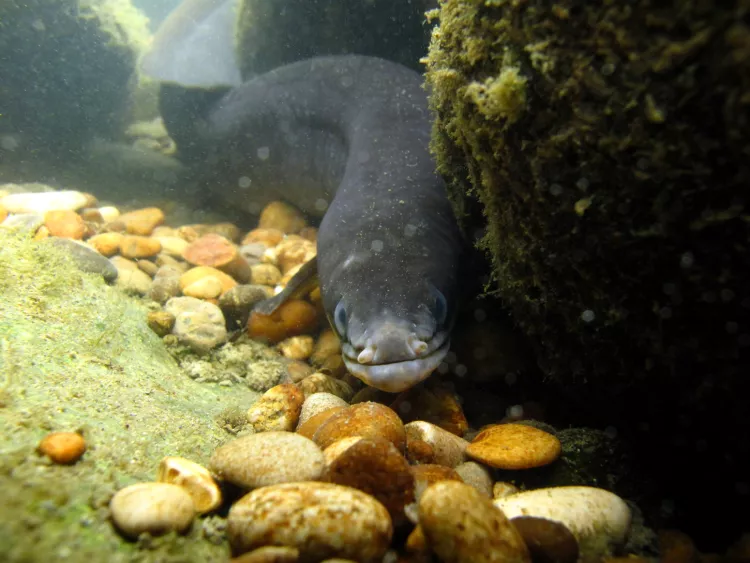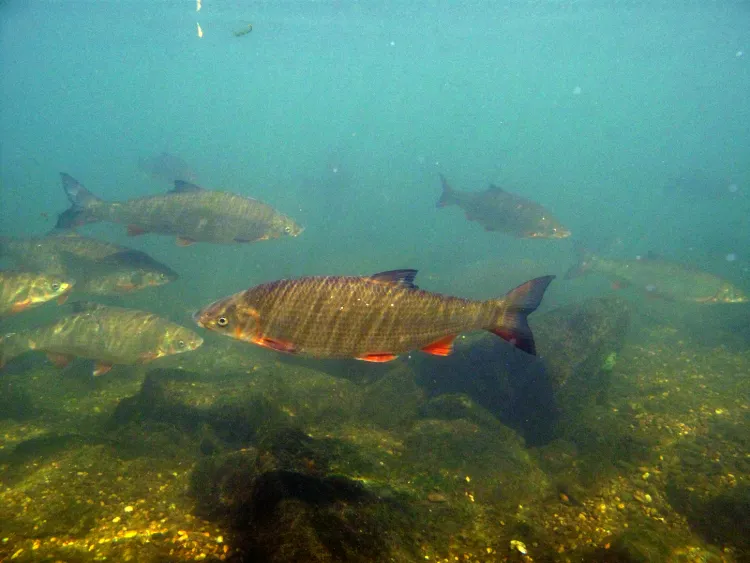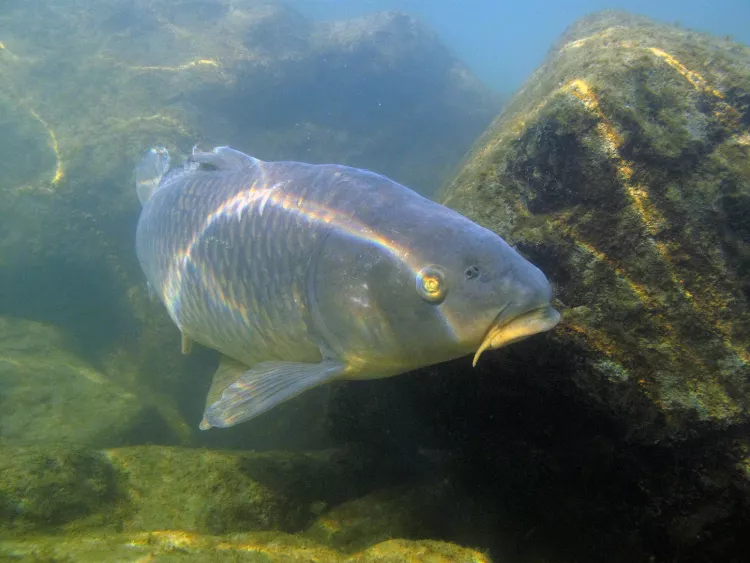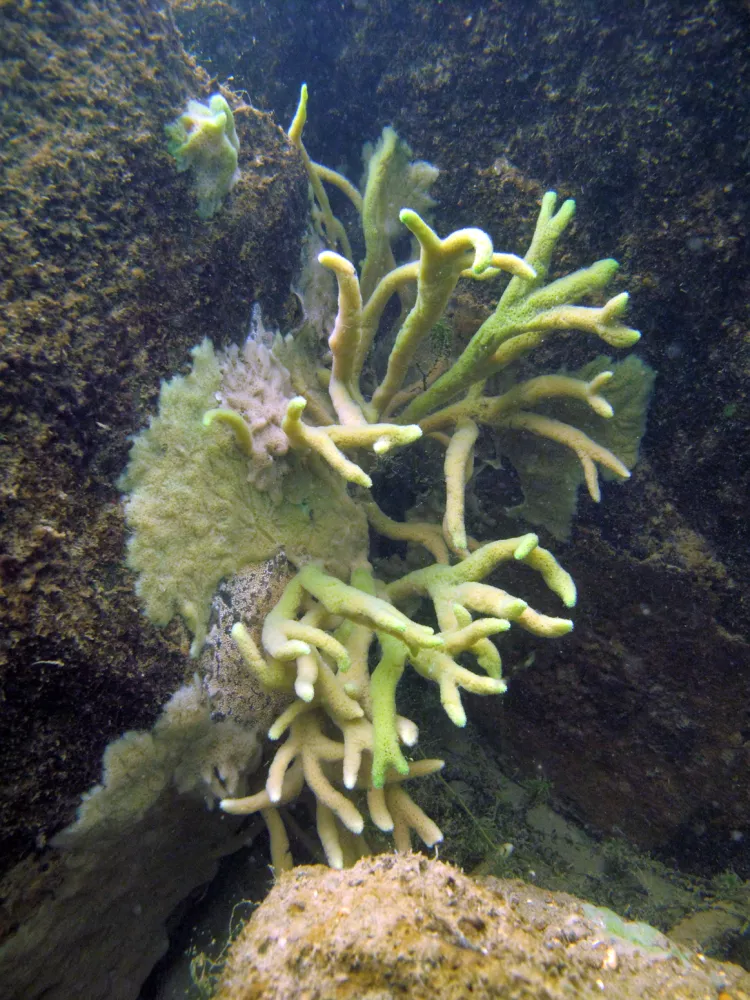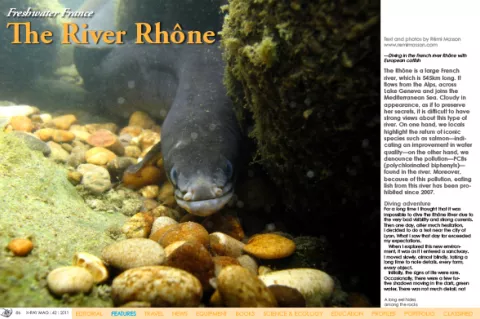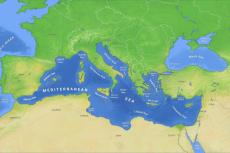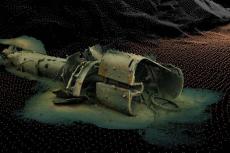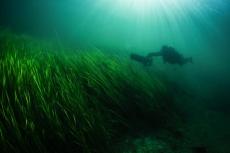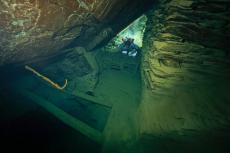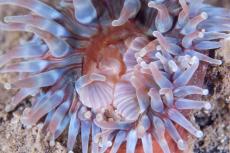—Diving in the French river Rhône with European catfish
The Rhône is a large French river, which is 545km long. It flows from the Alps, across Lake Geneva and joins the Mediterranean Sea. Cloudy in appearance, as if to preserve her secrets, it is difficult to have strong views about this type of river
Factfile
Rémi Masson is an underwater photographer and dive writer based in Grenay, France.
For more information or to order prints, visit: www.remimasson.com
On one hand, we locals highlight the return of iconic species such as salmon—indicating an improvement in water quality—on the other hand, we denounce the pollution—PCBs (polychlorinated biphenyls)—found in the river. Moreover, because of this pollution, eating fish from this river has been prohibited since 2007.
Diving adventure
For a long time I thought that it was impossible to dive the Rhône River due to the very bad visibility and strong currents. Then one day, after much hesitation, I decided to do a test near the city of Lyon. What I saw that day far exceeded my expectations.
When I explored this new environment, it was as if I entered a sanctuary. I moved slowly, almost blindly, taking a long time to note details, every form, every object.
Initially, the signs of life were rare. Occasionally, there were a few furtive shadows moving in the dark, green water. There was not much detail, not much light, but a strange atmosphere. The water was often so hazy that if I held out my arms, it was very difficult to see my fingers. It became a little bit better after a few minutes when my eyes become accustomed to the dark.
The rippling shoreline and shallower parts of the river were by far the most populous. Large shoals of breams, common nases, barbels, crucian carps and perchs were playing hide and seek there, while huge eels slipped silently through the stones.
Some carp were swimming through, too, alone or in shoal. It was not uncommon to see a group composed of fishes that belonged to several different species.
At the bottom of the river, often in less than 50cm of water, I could see zanders sleeping.
There is enormous diversity in large rivers. They bring together, in one place, most of the species of the running waters of the surrounding streams and lakes.
Vegetation as it was, although small, was not necessarily absent and even took many surprising forms, such as large freshwater sponges branching out, attached to the rocks like stag horn coral.
In the quieter areas, there were also the long, developing fronds of milfoils, aquatic plants native to Europe, which served as lookout points for pike. The aquatic plants sway in the current like the hair of mermaids.
The lord of the river
Diving deeper down to the river bed was to enter another world—a dark world where the rules were reversed. Here, it was not the diver who came to see the fish, but the fish that came to meet the diver. Carps were very curious and didn’t hesitate to approach the diver to try to understand what a strange and clumsy creature a he is. Curiosity satisfied, they continued along their underwater stroll.
But the real lord of the river prowled the diver, too. First, there was a shadow that grew gradually bigger until it became, oftentimes, bigger than me. Suddenly, I could see two long whiskers, then a huge head split by a grin. A European catfish of over two meters was now facing me. No sudden movements. He just rubbed against me, while I stood on my knees on the river bed. I dared not move. This behaviour surprised me every time, and I could not always explain it.
When he decided it was time, he went—slowly and gracefully, undulating with majesty. This kingdom belonged to him, and he knew it.
The mystery of the wels catfish gathering
It’s also possible to witness some other unusual fish behaviours in the River Rhône. Sometimes the fish gather in certain places to form a compact shoal of several dozens, or hundreds, of individuals. Such groups have already been observed for roach, bream, barbel—and to a lesser extent—predators such as zander.
But the most impressive of all is probably the amazing gatherings of wels catfish (Silurus glanis), with dozens of fish piled up at the bottom of the river. They form a moving ball several meters wide, reminding me of a shoal of common catfish (Ameiurus melas).
The reasons for these winter gatherings still remain a mystery. This is why I collaborated with a researcher of the CNRS (Centre National de la Recherche Scientifique) to study and understand the origin of this strange behaviour.
Rivers surprise me with their amazing biodiversity, but there is still much to learn about them. It’s a dark world populated by mermaids and monsters that gradually reveal its secrets. ■
Want to see a catfish as big as a shark? Watch this video:

